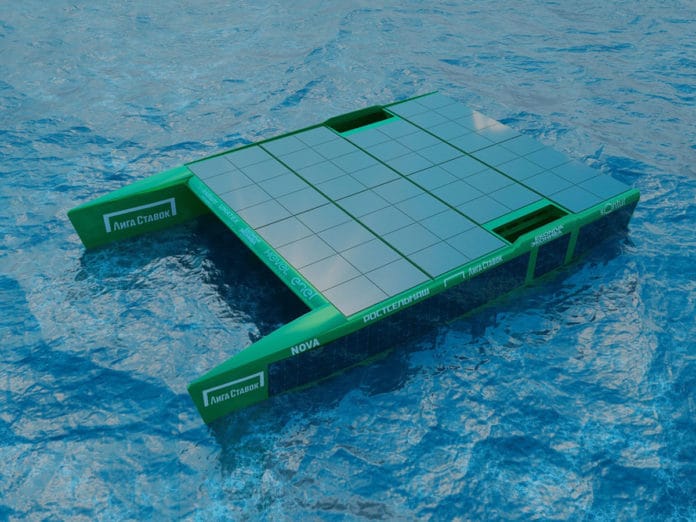The 100% solar-powered catamaran will be tested in a 9,000 nautical mile expedition from Chile to Australia that is set to start in December 2021.
Designed by English racer and engineer Phil Morrison, the catamaran NOVA is 11 meters long, 7 meters wide, and able to reach speeds of 5-7 knots. Its hull is made of carbon-fiber composites, and it has a displacement of 2.2 tons. The catamaran is equipped with an 11 kW PV system built with heterojunction modules provided by Russian manufacturer Hevel Solar.
The solar array will cover an area of 66 m2 (square meter) on the vessel, and the sides of the hull will also carry panels, providing an additional 12 m2 per side. “Whilst these panels are not expected to be as efficient as the deck panels, it is hoped they will gather valuable additional energy when the sun is low on the horizon and from light reflected off the water surface,” Hevel Solar says.
Solar power is used to keep the vessel going and guarantee the supply of freshwater, as the boat is equipped with a desalination system powered by solar-generated electricity.
The boat will be helmed by Russian adventurer and survivalist Fedor Konyukhov in a first-ever solo transpacific crossing by solar electric catamaran. The serial adventurer will spend about 100 days alone in the ocean, covering about 3,000 nautical miles a month. During the voyage, Konuykhov will keep a video blog and monitor the plastic pollution of the Pacific Ocean. The collected data will be further analyzed by the Russian Academy of Sciences.
“It can stay autonomous in the ocean for up to 6 months and go as far as needed, without any limitations,” said Oscar Konuykhov, the team leader of the expedition project. “State-of-the-art technologies allow it to monitor the environment and take water samples automatically. Built with proven technologies, NOVA can run in dangerous environmental conditions, even in disaster areas.”
